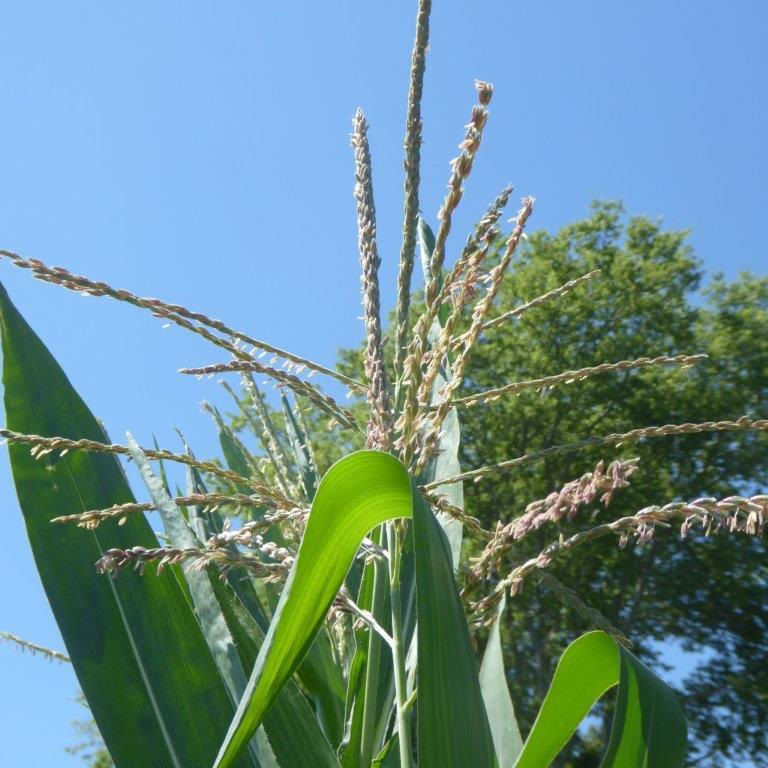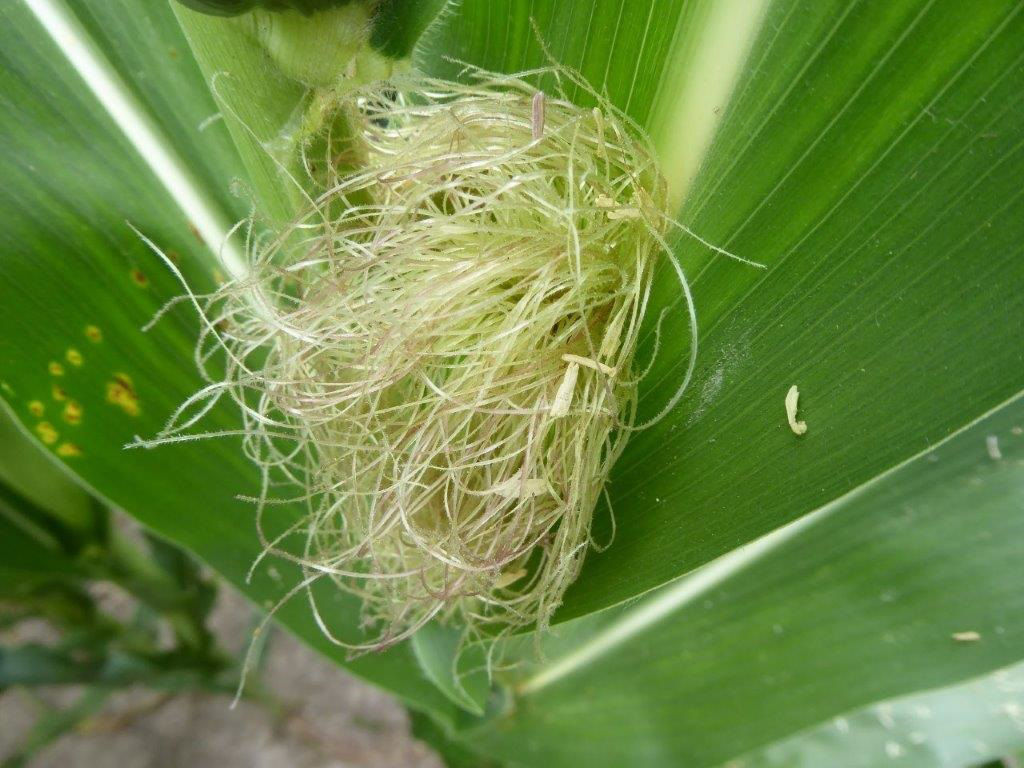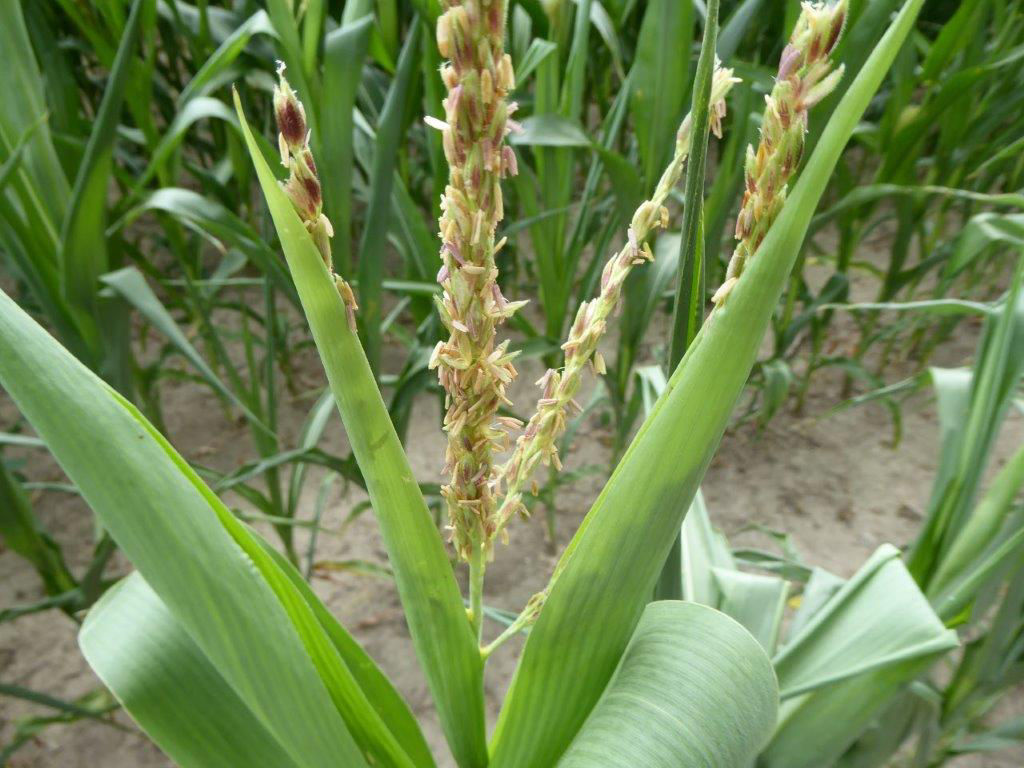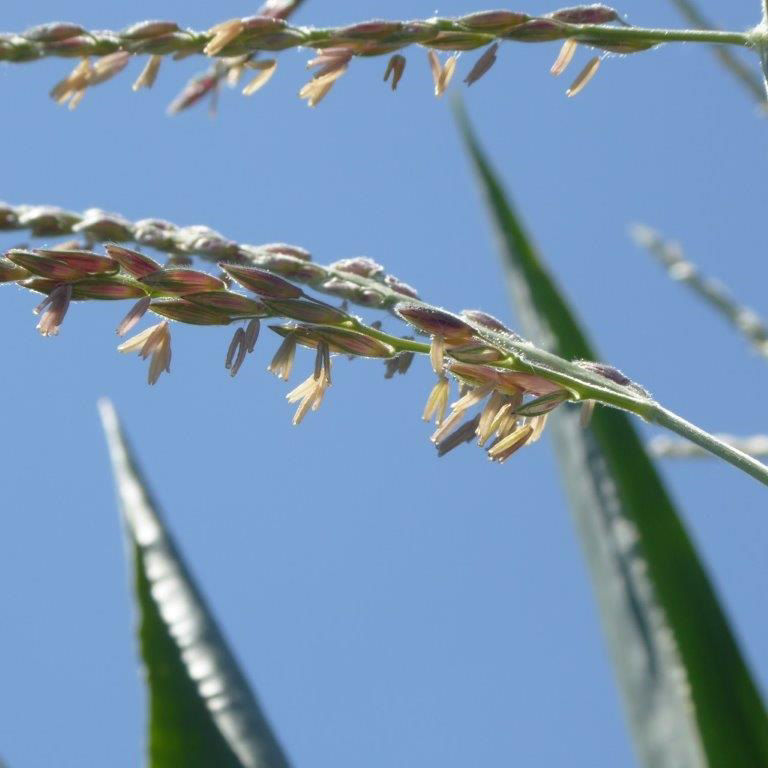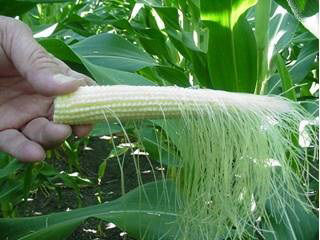August 25, 2021
High Heat Effect on Corn Plants and Developing Corn Kernels
A corn plant’s main goal it to reproduce by developing corn kernels. Within the reproductive stages, grain yield is affected by how well the corn plant can complete pollination and grain fill. Consecutive days of high temperatures during pollination can have a huge negative impact on kernel fertilization. Continued stress can limit kernel size and yield potential.
To successfully pollinate, a corn plant needs pollen shed and silking to occur simultaneously (Figures 1 and 2). Anytime time these two processes are out of sync, incomplete fertilization and yield loss can occur. Several factors can interfere with this timing, the main one being weather.
Heat and Drought Stress
Corn pollination and grain fill are two crucial processes that determine grain yield and can be significantly impacted by weather and the environment. High summertime temperatures are often experienced in conjunction with drought stress and can be detrimental to both pollen shed and silking. Pollen can be damaged, and pollen production slowed by temperatures in the mid-90s, and temperatures greater than 100°F can kill corn pollen.1 Exposed silks, especially under low humidity, can dry out when temperatures are above 95°F.1 Silk elongation within the husks may continue under stress; however, if soil moisture is low and drought and heat stress is severe, elongation may cease.2
Many times, drought stress may also accompany high temperatures. When available water is limited, corn plants begin to curl leaves and slow down photosynthesis to limit foliar water loss (Figure 3). This reduction in photosynthesis subsequently reduces the amount of available nutrients and sugars that are provided to the developing kernels. In addition to reduced photosynthesis, limited water availability also greatly reduces silk growth, as they are mainly water.
In addition to heat and drought stress, high humidity may also accompany high temperatures. In situations where humidity does not decrease while the temperature rises, pollen shed can be negatively impacted. During pollination, pollen shed from anthers is triggered by rising temperatures and decreasing humidity.3 If the humidity does not drop, the anthers are not triggered to release pollen and may fall to the ground without releasing any pollen. This subsequently reduces the amount of available pollen to fertilize the emerged silks.
High Heat During Grain Fill
After pollination occurs, the corn plant begins to push sugars and starches into the developing kernels. Plant stress during this process can impact yield potential negatively, as kernel size can be impacted from a shortened grain fill period. One main concern is high nighttime temperatures. High nighttime temperatures can cause corn plants to respire more to cool down, which uses up sugars (energy) that could otherwise be provided to the developing kernels. Reduced kernel size lowers potential grain yield.3,4
Previous research has shown little impact to yield when soil moisture is sufficient and corn plants experience temperatures between 95°F to 98°F. However, four or more consecutive daytime temperatures in this range can begin to reduce yield potential. One attribute that has allowed corn plants to deal with excessively high temperatures is that they typically shed most of their pollen in the morning hours before temperatures rise to their afternoon highs. Furthermore, pollen shed usually lasts for about two weeks, which may allow for temperatures to become more moderate.
Pollination success can be checked by carefully removing the husks from an ear and shaking the ear to see if silks fall away. If silks remain attached, the embryo (potential kernel) has not been fertilized (Figure 5). Should high heat and drought persist through pollination, poor kernel set can result (Figure 6).
